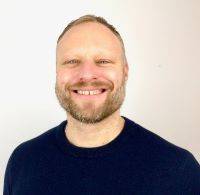Movement and Performance Research
Our research focuses on human movement in real-world contexts. We take an interdisciplinary and co-productive approach, at the intersection of the performing arts, sport psychology and exercise neuroscience, and working together with artists and athletes. Our research evolves around three broad research areas: the cognitive neuroscience of dance and the performing arts, the role of movement, sport and exercise for physical and mental health, and mobile neuroimaging in real world contexts.
Neurocognition in dance and the performing arts: Movement is the common denominator of the performing arts, including dance, music, and theatre. Dance movement provides a rich, naturalistic, and ecologically valid approach to research in motor cognition. Dance and choreography also provide a window into studying the interplay between biological and cultural evolution, for example linking movement synchrony to social bonding and nonverbal communication between groups. We also apply neuroscience methods to understand the role that dance and the performing arts play in contemporary society. In the NEUROLIVE project, we study what distinguishes live dance performances or music concerts from other recorded, simulated or streamed events. How do people dance or act? How do people perform in the presence of others? What makes a movement beautiful? What is the difference between watching performances live in a theatre or online?
Movement and exercise in physical and mental health: Regular exercise, sports participation, dancing and making music are all beneficial for physical and mental health, but different leisure activities appeal to different people. As part of the Exercise Neuroscience Research Group and together with the Institute of Sport Exercise & Health (ISEH), we aim to better understand how sports, exercise and creative movement can improve physical and mental health. Who benefits from what kind of exercise and why? Do people who move together like each other more? Why do we feel happier after a gym workout or going for a run? How come some people enjoy working out and others don’t?
Real-world Neuroscience & Mobile Neuroimaging: Much of our research takes place outside the lab. We develop new and combine existing qualitative and quantitative, practice-based and neuroscience research methods, and use the latest mobile neuroimaging and wearable sensing technologies to take neuroscience out of the lab and into the world.
Research topics
- Cognitive neuroscience of human movement
- Movement synchrony in groups, joint action and social bonding.
- Movement/Dance expertise and skill acquisition.
- The role of exercise and creative movement for physical and mental health.
- Neuroaesthetics of dance and the performing arts.
- Mobile Neuroimaging and Hyperscanning (mobile EEG)
- The Neurocognition of Liveness / NEUROLIVE project (www.neurolive.info)


 Close
Close

